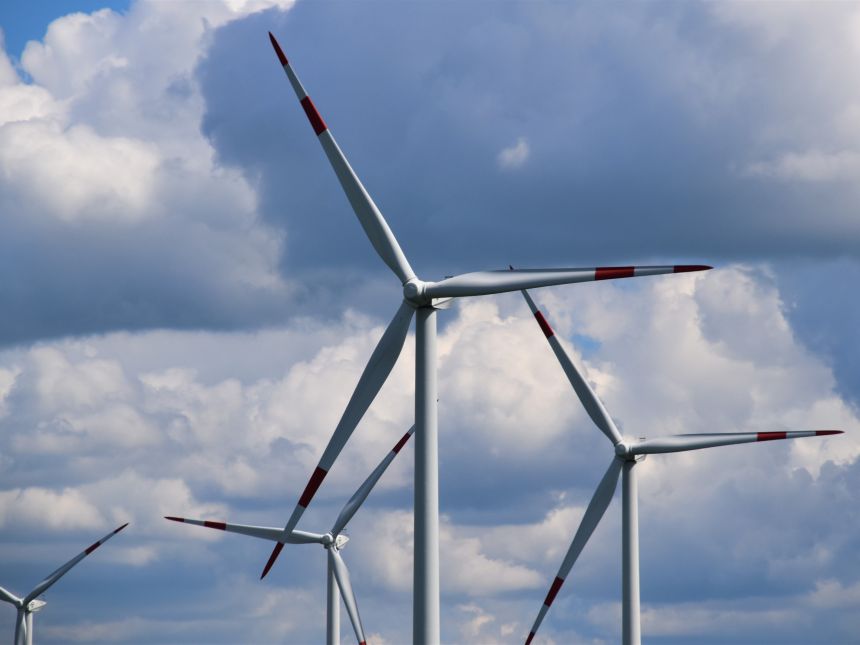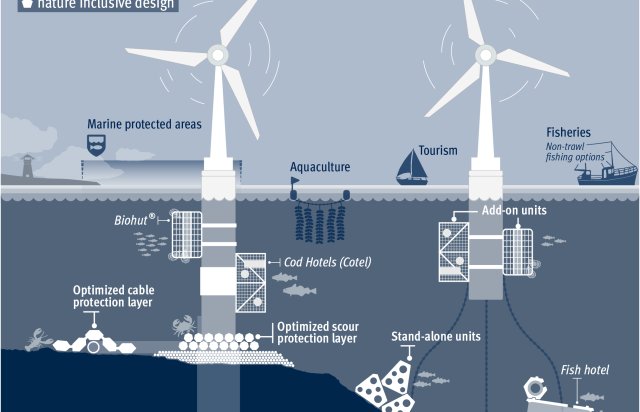
We need a better definition of nature positivity
Nature positivity is a popular buzz word for those engaged in the offshore wind industry. But a recent study concludes that a scientific definition of what it really means, is missing.
Nature positivity and nature positive solutions are buzz words among those who are eager to make the green shift happen in a nature friendly way. But what is it, really? Do we have a clear definition on what it is, so that we can check if our activities and solutions, whether we are scientists, bureaucrats, or business actors, deserve to be called nature positive?
NIVA’s Juan Carlos Farias Pardo has led a study of existing literature about nature positive approaches and coexistence in the offshore wind industry. In an article in ICES Journal of Marine Science, he and his group sum up the results of the study, the research group ends up with more questions than conclusions.
More information needed
− We have quite some information on nature-positive approaches and fixed structures for ocean wind. But we need more information about the floating offshore wind turbines, which are quite new, and quite different from the fixed ones, Pardo explains.
To obtain this information, more experimentation, data collection and testing on a long-term basis, is key. The ecosystem will change through time, so long term experiments are needed.
− So far, we have very few examples of this. The longest time span study already published is about a decade. Within these studies, we see how the ecosystems change over time. After the first species approach the installations, others join them, thus affecting the whole ecosystem. Thus, we cannot make any predictions or conclusions based on short term experiments. Only with studies covering longer time spans, will we be able to check the effects of offshore wind installations and nature positive approach on the environment.

Knowledge is vital
Actors in the offshore wind industry might claim that if they manage to increase the biodiversity where their offshore wind installations are located, by using nature inclusive design, they succeed in producing offshore wind energy in a nature positive way. But according to scientists, that is not enough. It is important to find out how we can achieve a long-term biodiversity net gain for the environment.
− Unless you can prove that your way of installing ocean wind installations in the sea really leads to an increased variety of life, like fish, and other sea creatures, you cannot claim that what you are doing is nature positive, according to the literature, Pardo says.
Ongoing projects
Most of the ongoing initiatives with nature positive approaches, are in the North Sea. The actors use so called nature inclusive design. For example, they test if and how different sorts of materials used to protect the cable attract specific species.
− Most of the knowledge we have so far is coming from the Belgian and Dutch projects in the North Sea. What the results of these first wind power plants teach us can give valuable knowledge to similar projects worldwide. Many countries are now interested in pushing the offshore wind development, Pardo says.
The whole world is interested in the learnings from the research on the effects of wind ocean installations and the use of nature inclusive design on the marine environment, whether from the fixed or the floating structures. How this can be integrated with fisheries or the tourism industry, is also interesting.
Social conflicts
There are some ongoing projects looking into the difference between how the fixed and floating structures are perceived by society, especially in connection with fisheries.
- Because of the turbines, fishermen tend to avoid wind power plants. At the same time, the turbines can create a buffer environment, a safe environment, where the fish would go to reproduce. This will of course make the area interesting for fishermen, Pardo explains.
In some parts of the world, it's still possible to fish in the ocean wind areas. Each place has its own challenges. But in general, there are many social conflicts connected to offshore wind farms.
Ongoing work
If the definitions are not yet clear and adapted, there is light in the end of the tunnel. The International Union for Conservation of Nature, IUCN, is currently working on a White Paper with not just a definition, but also an integration of understandings from science, stakeholder groups and the industry into the concept.
What we already know is that the definition of nature positive approach should bring a net positive impact, it should add something to the environment in terms of biodiversity. But we need to define more clearly and scientifically what such positive effects are.
What now?
As well as a clear definition of nature positivity, there is a need for more information, knowledge, and long-term studies to proclaim that offshore wind installations really are nature positive. NIVA is ready to contribute to nature positive ocean wind production by bringing knowledge and expertise on water environment into the topic.
− With the competence we have at NIVA and Akvaplan-niva, we can run long term experiments. We can also predict how things will work out by using digital twins or models to predict physical-biogeochemical processes, Pardo concludes.
.jpg) Mari Susanne Solerød
Mari Susanne Solerød
 Solrun Figenschau Skjellum
Solrun Figenschau Skjellum
 Mats Gunnar Walday
Mats Gunnar Walday